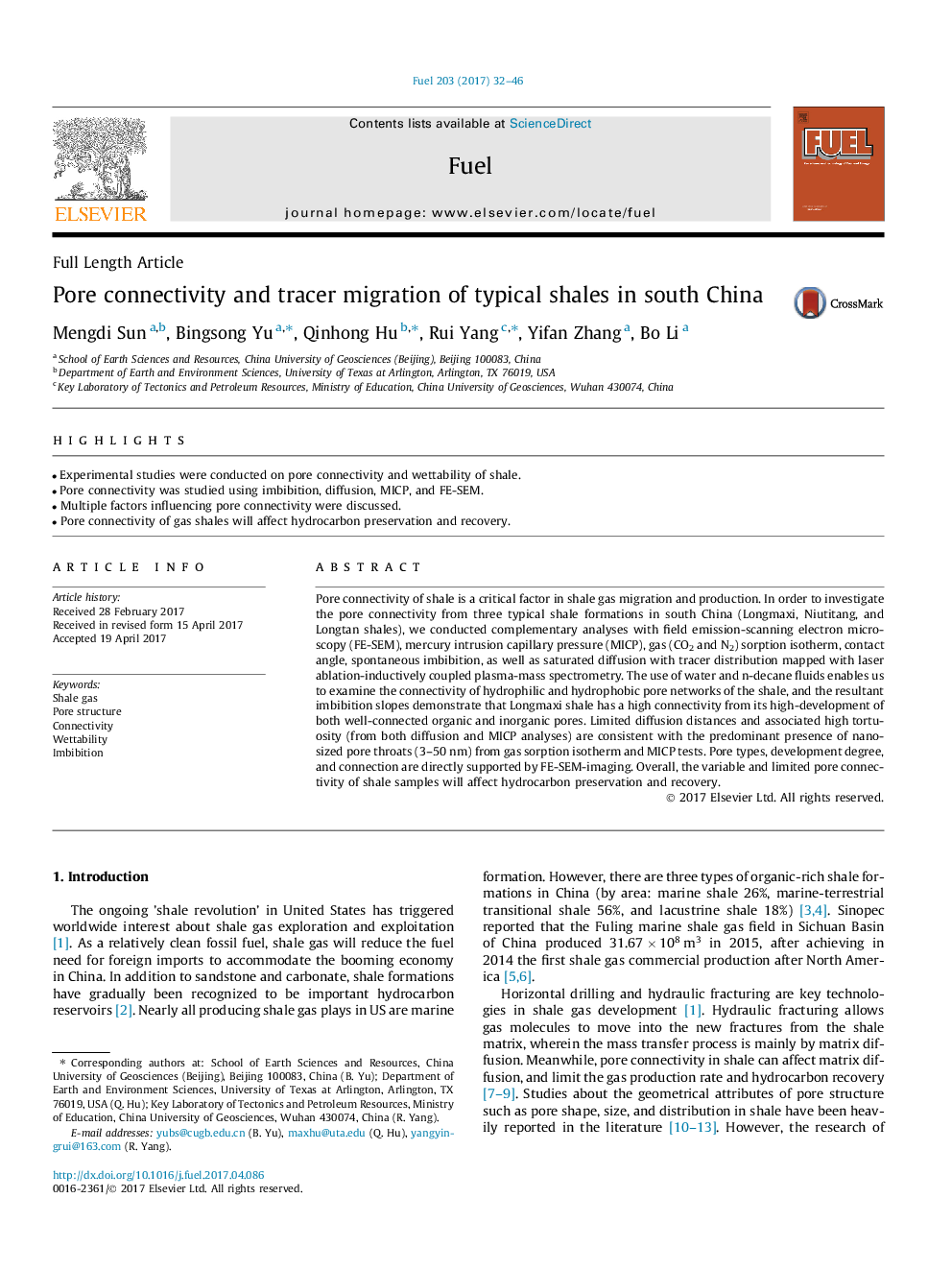| Article ID | Journal | Published Year | Pages | File Type |
|---|---|---|---|---|
| 6474262 | Fuel | 2017 | 15 Pages |
Abstract
Pore connectivity of shale is a critical factor in shale gas migration and production. In order to investigate the pore connectivity from three typical shale formations in south China (Longmaxi, Niutitang, and Longtan shales), we conducted complementary analyses with field emission-scanning electron microscopy (FE-SEM), mercury intrusion capillary pressure (MICP), gas (CO2 and N2) sorption isotherm, contact angle, spontaneous imbibition, as well as saturated diffusion with tracer distribution mapped with laser ablation-inductively coupled plasma-mass spectrometry. The use of water and n-decane fluids enables us to examine the connectivity of hydrophilic and hydrophobic pore networks of the shale, and the resultant imbibition slopes demonstrate that Longmaxi shale has a high connectivity from its high-development of both well-connected organic and inorganic pores. Limited diffusion distances and associated high tortuosity (from both diffusion and MICP analyses) are consistent with the predominant presence of nano-sized pore throats (3-50Â nm) from gas sorption isotherm and MICP tests. Pore types, development degree, and connection are directly supported by FE-SEM-imaging. Overall, the variable and limited pore connectivity of shale samples will affect hydrocarbon preservation and recovery.
Related Topics
Physical Sciences and Engineering
Chemical Engineering
Chemical Engineering (General)
Authors
Mengdi Sun, Bingsong Yu, Qinhong Hu, Rui Yang, Yifan Zhang, Bo Li,
